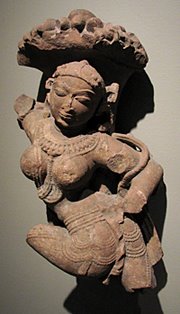 I finished reading Turtle Diary by Russell Hoban last week. Or, I should say, I finished my first reading of it. This is a book that can be read again and again because of the way Hoban weaves every detail into the on-going narrative. Each time you pick the book up, you notice something new.
I finished reading Turtle Diary by Russell Hoban last week. Or, I should say, I finished my first reading of it. This is a book that can be read again and again because of the way Hoban weaves every detail into the on-going narrative. Each time you pick the book up, you notice something new.I came across the title while reading The Book Addict’s Treasury by Julie Rugg and Linda Murphy, which included a quote from Hoban’s novel that I previously posted here. Upon further investigation, I found to my delight that I had made Mr. Hoban’s acquaintance a number of years ago in the form of his children’s books about a wayward young badger named Frances (Bedtime for Frances, A Baby Sister for Frances, Bread and Jam for Frances, etc.) I also found Turtle Diary at the Kanas City public library. This is a scan of the book, the first American edition, which was published by Random House in 1975. The library was once in the practice of stamping due dates in the front of books, which they have long since discontinued. I used to wince about this, but now I wonder if it was really such a bad thing. The Hoban book has been in the library system for over 30 years. The first checkout stamp was on June 14, 1976. That was the summer before my ninth grade year in junior highschool. I was probably at church camp or practicing the clarinet. Quite a few stamps were made in 1976 and 77, then one in 1983 and another in 1991, and nothing since. I'm not sure when the library discontinued the stamping practice.
A marvelous website, The Head of Orpheus, maintained by Dave Awl, provides information about all things Hobanian.
Turtle Diary is the story of William G. and Neaera H., two strangers who find themselves drawn together by their desire to free sea turtles from the London Zoo.
Sea turtles. Two or three hundred pounds the big ones must have weighed. Looping and swinging, flying in golden-green silty water in a grotty little tank no bigger than my room. Soaring, dipping and curving with flippers like wings in a glass box of second-hand ocean. Their eyes said nothing, the thousands of miles of ocean couldn't be said.
— William G.
Hoban takes this unlikely premise and spins a bewitching tale of loneliness and self-discovery in which the protagonists themselves, no less than the turtles, ultimately find freedom.
The narrative takes the form of alternate diary entries, William’s followed by Neaera’s (as G is followed by H?). The two don’t meet until the story is well underway, by which time the reader has been shown many parallels between their emotional lives and attitudes through their responses to similar objects and events, intriguingly, in some instances, to the very same objects and events, which they encounter separately before their paths cross. When they do meet, and almost instinctively recognize their common interest, the discovery seems inevitable. Unavoidable, even.
William G., previously in advertising, is 45, divorced, and working as a sales clerk at a bookstore. Neaera H. is 43, a successful children's book writer and illustrator who has never been married and has grown tired of her work. Here is how she describes herself in chapter 2, her first entry: “My married friends wear Laura Ashley dresses and in their houses are grainy photographs of them barefoot on continental beaches with their naked children. I live alone, wear odds and ends, I have resisted vegetarianism and I don't keep cats.” She closes her first entry on the following page with this observation: “The best bird drawings I’ve done were for Delia Swallow’s Housewarming, one of my early books. The story was rubbish but the swallow was well observed, she was a distinct Laura Ashley type.” Hoban’s eye for precise detail and his trenchant wit informs and illuminates the entire novel, making it a treat for the attentive reader. He isn’t afraid to challenge his readers, either, as details resurface far removed from their initial appearance, their significance transformed by intervening events and developments.
The book was made into a 1985 film directed by John Irvin with a screenplay by Harold Pinter. The cast included Glenda Jackson (perfect as Neaera), Ben Kingsly (as William) and Michael Gabon as George Fairburn, the London Zoo keeper in charge of the turtles, and an unofficial co-conspiritor. Dave Awl accurately describes it as a lovely companion piece to the book — a faithful screen adaptation enjoyable in its own right, though missing the poignant inner reflections which make the book such a memorable reading experience. Elly and I watched and enjoyed the film. It is a bit hard to come by: I couldn’t find it on Amazon or Netflix, but was able to check it out from the public library. I expect the video should be available at many art film rental type stores. It is worth seeking out, but read the book first.





No comments:
Post a Comment